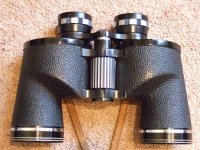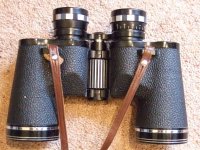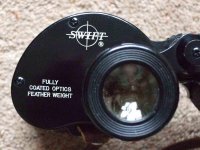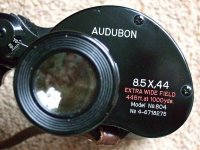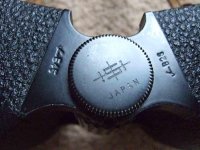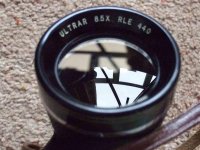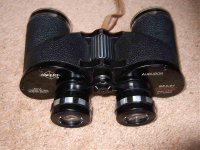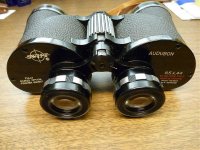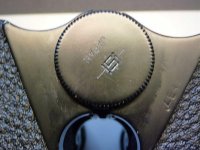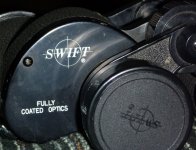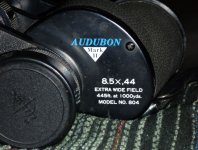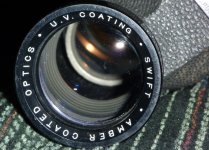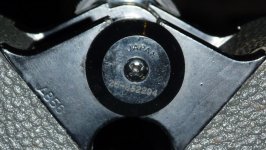Hi everybody,
This is my first post on this (or any other) forum, so please be gentle with me!
I have really enjoyed reading the history of the Swift Audubon. I own a large body Type 3a with a blue band which seems to have been made for the European market.
The serial number on the hinge cap is No.26-713353 and the body is stamped B56.
I bought my binoculars on the advice of an old chap who I work with, who has been birding for over 30 years and really knows his optics. I won them on ebay and paid £55 for them. They are superb as everybody reading this will already know, but I have massively improved the image of my bins with a very simple modification.
I don't know if it's the shape of my face but I was always aware of reflections in the eyepieces when viewing through my bins varying from hardly noticable to quite annoying depending on the time of day, angle of the sun etc.
I have solved this problem by fitting winged eyeshields, and the difference really is outstanding.
The eyeshields are made in the U.S.A by Field Optics Research and their website is
www.clearbirds.com. I bought mine from Ace optics in Bath, and they cost £21 inc.postage.
When you want to store the bins or fit a rainguard or caps the eyeshields flip down out of the way. They really are very good.
I bought a quality padded strap and an Opticron rainguard,and these binoculars now serve me very well as my main birding bins.
I have looked through a lot of very expensive binoculars, and it only makes me realise just how good these 40 year old classics really are.
I will never part with them, and I believe they will get even more collectable.





